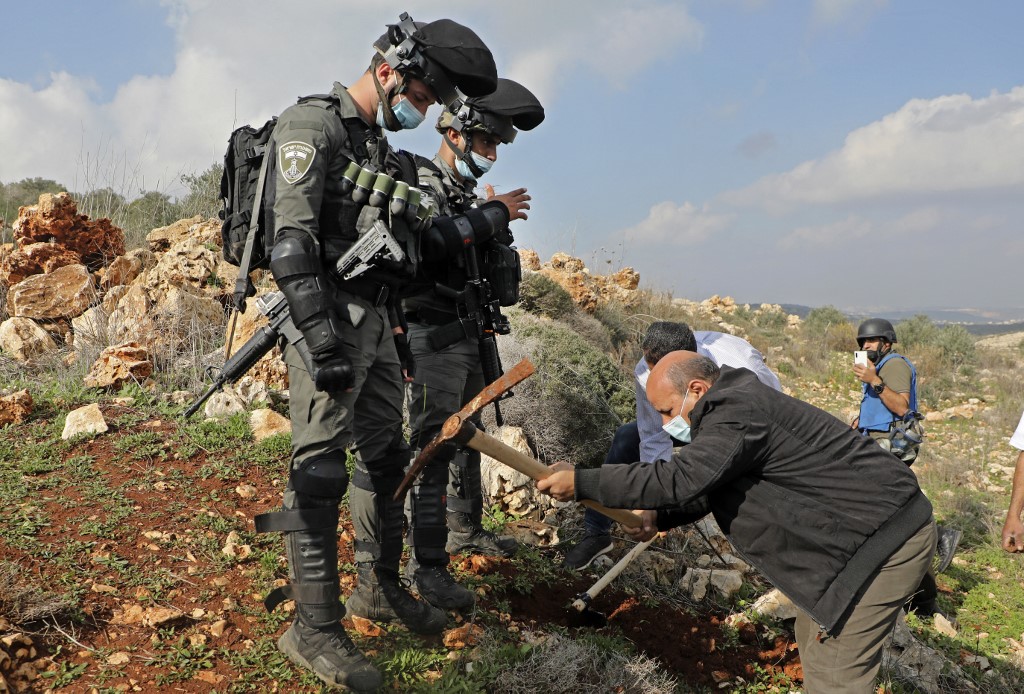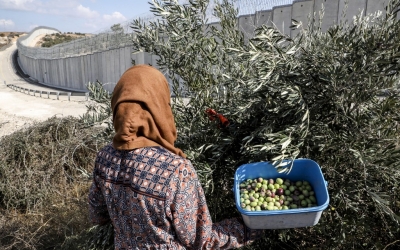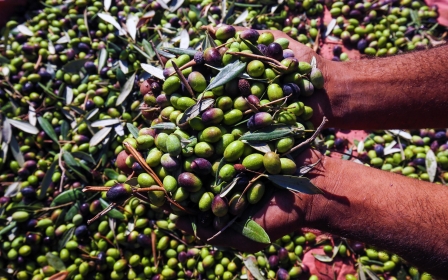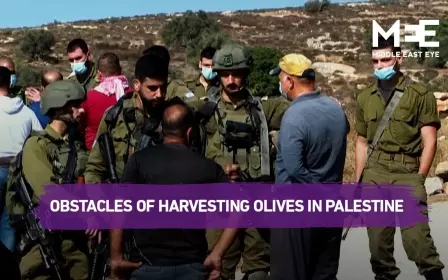'Nature has spoken': A forest fire to kindle Palestinian dreams of return
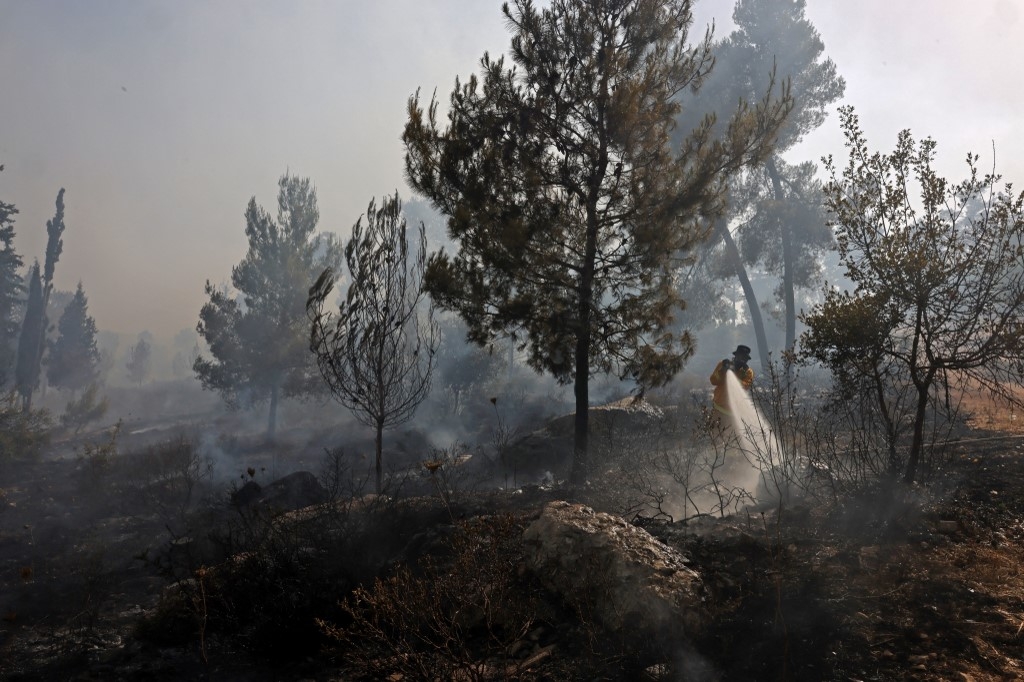
During the second week of August, Some 20,000 dunams of land were engulfed by fires across Jerusalem’s mountains.
It was a natural disaster of the first degree. However, no one could have expected the sight that unfolded after the fires were extinguished. Or rather, no one had imagined that the fires would expose what followed.
After the flames were put out, the resulting landscape was terrible for the human eye in general, and for the Palestinian eye in particular. For the fires had revealed remains of ancient Palestinian villages and agricultural terraces; terraces built by their long-dead ancestors to enable them to cultivate crops and plant olive trees and vines on the slopes of the mountains.
Photographs taken before the Nakba of 1948 show that olive trees and grapevines were the two most common plants in these areas
Across these mountains, which make up the natural environment on the western side of the city of Jerusalem, ran the Jaffa-Jerusalem road, the road that linked Jaffa’s historical port with the Holy City of Jerusalem. This route across the mountains was used by pilgrims from Europe and North Africa to visit Christian holy sites. They had no choice but to use the Jaffa-Jerusalem road, through valleys and ravines, and across the mountaintops. Over the centuries, it would have been touched by the feet of hundreds of thousands of pilgrims, soldiers, invaders, and tourists.
The agricultural terraces - or platforms - that Palestinian farmers constructed have an advantage: their durability. The terraces are up to 600 years old, according to estimates by archaeologists. But I believe they are even older than that.
New MEE newsletter: Jerusalem Dispatch
Sign up to get the latest insights and analysis on Israel-Palestine, alongside Turkey Unpacked and other MEE newsletters
Working with nature
The Palestinian farmer’s hard work is visibly clear on the surface of the earth. It has been proven through many studies that Palestinian farmers have always invested in the land regardless of its form; including mountainous land, which is very difficult to cultivate.
Photographs taken before the Nakba (Catastrophe) of 1948, when Palestinians were evicted by Jewish militia, and even dating back to the second half of the 19th century, show that olive trees and grapevines were the two most common plants in these areas.
These plants maintain soil moisture and provide a livelihood for local people. The olive trees, in particular, help prevent soil erosion. Olive trees and grapevines can also create a natural barrier to fire because they are leafy plants that retain humidity and need little water. In the south of France, some forest roads are lined with vineyards to act as fire barriers. The Palestinian farmers who planted them knew how to work with nature, how to treat it with sensitivity and respect. It was a relationship formed over the centuries.
But what did the Zionist occupation do? After the Nakba and the forced expulsion of large parts of the population - including the ethnic cleansing of every village, town, and city on the route of the Jaffa-Jerusalem road - Zionists began planting large areas of these mountains with non-native and highly flammable European pine trees to cover and erase what the hands of Palestinian farmers had created.
In Jerusalem’s mountainous region, in particular, all that is Palestinian - with its 10,000 years of history - has been erased in favour of everything that suggests the place’s Zionism and Jewishness. As a result of the European colonial mentality, there was a transfer of the European “place” to Palestine, so that the settlers would be reminded of what they had left behind.
The process of concealment was aimed at denying the existence of Palestinian villages. And the process of obliterating their features aimed to eliminate their existence from history.
Note that residents of the villages that shaped human life in the mountains of Jerusalem, and who were expelled by the Israeli army, live in camps and communities close to Jerusalem itself, including the Qalandiya and Shu’fat refugee camps and others.
Such pine forests are found in other locations, concealing Palestinian villages and farms that were demolished by Israel in 1948. International Israeli and Zionist institutions also planted European pine trees on the lands of the village of Maaloul, near Nazareth, Sohmata village near the Palestine-Lebanon border, and the villages of Faridiya, Kafr Anan, and al-Samoui on the Akka-Safad road, among others. They are now hidden and cannot be seen by the naked eye.
Huge significance
The villages were not even spared their names. For example, the village of Suba has become “Tsuba,” while Beit Mahsir became “Beit Meir”, Kasla became “Ksalon”, “Shoresh” instead of Saris, etc.
But if Palestinians have not yet been able to resolve their confrontation with the occupier, then nature has now spoken in the way it deems appropriate. The fires revealed a glaring aspect of the well-planned and engineered components of the Zionist project.
The terraces assert that the Palestinian cause is not over, that the land is awaiting the return of its children
To Palestinians, the discovery of the terraces on the mountains affirms their narrative that there was life on this land, that the Palestinian himself was the most active in this life, and that the Israeli expelled him so that he could take his place.
In this regard alone, the terraces carry huge significance. They assert that the cause is not over, that the land is awaiting the return of its children; people who will know how to treat it in the right way.
The views expressed in this article belong to the author and do not necessarily reflect the editorial policy of Middle East Eye.
This article is available in French on Middle East Eye French edition.
Middle East Eye delivers independent and unrivalled coverage and analysis of the Middle East, North Africa and beyond. To learn more about republishing this content and the associated fees, please fill out this form. More about MEE can be found here.



